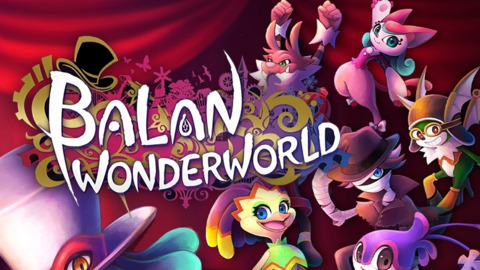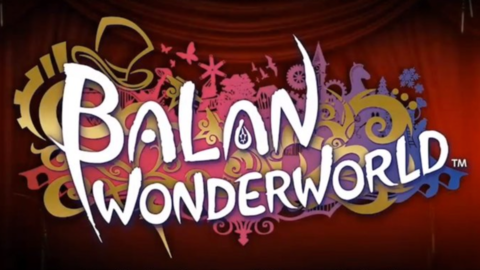Overview
Balan Wonderworld is a 3D platformer helmed by Sonic the Hedgehog series veterans Yuji Naka and Naoto Oshima. The game was developed in collaboration between Arzest, a development studio founded by Oshima, and Balan Company, a Naka-helmed Square Enix subsidiary created to develop games in genres outside of Square's usual scope. The duo's collaboration played heavily into the game's marketing prior to launch.
The game revolves around a stage-play setting inspired by musical theater, which informed its primary costume swapping mechanic. Structurally, Wonderworld is simplistic. Cutscenes use little to no dialogue, and many input buttons perform the same action, which only changes based on the player's current costume. The game features a total of 80 costumes, although some costumes function similarly to one another.
As Balan Wonderworld approached launch, it was met with significant negative reception from both critics and consumers. Some did, however, take note of the game's visual style and concept. Following the game's release, game director Yuji Naka parted ways with Square Enix and later filed a lawsuit against Square Enix and Arzest.
Gameplay
Balan Wonderworld is a 3D platformer with puzzle and collectible elements. Each "Chapter", or world, of the game is split into three acts and a boss fight. Only the first and second acts have to be completed to unlock a chapter's boss fight, with the third act of each world remaining inaccessible until the player has defeated the game's final boss.
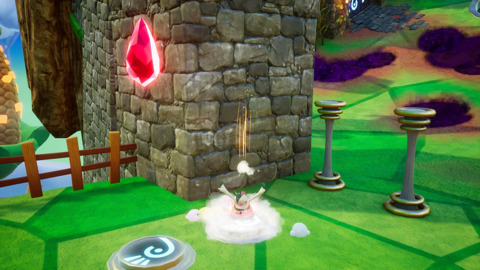
The game revolves around a "costumes" system, wherein the player character obtains various themed costumes, each with a different ability. Each non-directional input button activates the current costume's ability, leading the game to often be referred to as a "one button" platformer. Each chapter has an associated set of costumes, however costumes are not locked to the chapter they are found in. Additionally, the player can carry three costumes at once, including duplicates of the same costume. Costumes double as the player's health, with a costume being lost if the player gets hit while wearing it. A player's available three costumes can only be changed when collecting new costumes, or entering changing stands. The changing stand holds a maximum of 18 of each costume.
Difficulty
Although never stated in-game, Balan Wonderworld has an adaptive difficulty system. Repeatedly struggling with levels will decrease enemy spawns and boss difficulty, alongside increasing costume spawns. Alternatively, defeating several enemies in a row without taking damage will activate "Red Stamp" mode, a harder difficulty with more frequent enemies, and harder mid-bosses in levels. Defeating certain mid-bosses in Red Stamp mode will cause the chapter's boss to be "Lanced", increasing its difficulty and unlocking an achievement when defeated. Getting hit while in Red Stamp mode exits the mode.
Balan Statues
Each level, or "Act", has a number of collectible Balan statues, with Act 1, Act 2, and the boss fight of each world containing golden Balan statues, and Act 3 of each chapter/world containing rainbow Balan statues. Unlocking new worlds requires a certain number of golden statues be obtained, and unlocking the final boss requires collecting 110 golden statues, on top of defeating every world's boss.
Additionally, Acts 1 and 2 of each world contain Balan statues which activate "Balan's Bout", a selection of several quick-time event minigames featuring Balan. The player's timing determines the statue received, from bronze, silver, and gold. Replaying a chapter's Balan's bouts requires defeating a chapter's boss.
Collecting all of a type of statue unlocks a secret cutscene showing said statue dancing.
Tims
Tims are fuzzy creatures which inhabit the game's hub-world, known as the Isle of Tims. Tims congregate around the Tower o' Tims, a fixture in the center of the island. Tims occasionally interact with the tower, increasing a counter attached to it. As the counter increases, additional sections are added to the tower, with the tower being complete upon the counter reaching 24,000, at which point the counter disappears. Additionally, feeding Tims drops (gems acquired in any stage) will cause them to interact with the tower.
If a Tim is fed enough drops, various things will happen. A Tim fed enough of the same color drop will earn a corresponding medal. A Tim fed enough of any drop will increase in size, becoming a Tam. If another Tim is thrown at a Tam, the Tam will lay a Tim egg and revert to being a Tim. Tim eggs are then hatched when the player touches them. Additionally, Tims will accompany the player into stages for assistance, with the Tim's color determining their behavior in levels. Tims brought into levels can get caught in traps, causing them to be lost forever if the level is finished while a Tim is still in a trap.
Breeding two Tims, both with all three colors of drop medal, has a chance to obtain a King Tim, a Tim with a crown on its head.
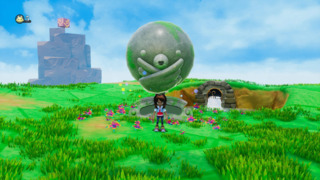
In certain levels, stone statues depicting Father Tim can be found. Approaching Father Tim statues in a stage will grant the player rainbow drops, a special type of drop. Giving rainbow drops to the Father Tim statue on the Isle O' Tims will increase a bar on the statue, with the bar filling after 20 rainbow drops.
Throwing a King Tim at a completed Father Tim statue will awaken the Ultima Tim, as well as unlock a secret costume: Balan. After obtaining one Balan costume, additional ones cost several rainbow drops.
Story
Balan Wonderworld follows two children, Leo Craig and Emma Cole, as they explore Wonderworld to regain their emotional balance.
In the game, the two struggle with alienation from their peers, which leads them to Wonderworld, a mysterious theater operated by Balan. Balan explains that the two are missing a piece of their hearts, and tasks them with helping twelve residents of Wonderworld who are beset by an evil entity named Lance. Each world follows one inhabitant's story, each one's struggles causing them to nearly succumb to Lance's influence. Each time, the children defeat the inhabitants' negativity, solving their problems before sharing an interpretive dance number with them.
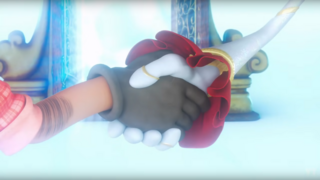
After all twelve inhabitants are helped, the children face Lance directly. The other inhabitants of Wonderworld encourage them, giving them the strength to defeat Lance. After he is defeated, Lance's true form is briefly seen before he is consumed by his own darkness. Balan and the inhabitants of Wonderworld then say their goodbyes, going their separate ways. Before the children leave, Balan takes off his hat, revealing that he looks similar to Lance's true form. The children return to their lives, their own problems solved, with Leo impressing a dance troupe and Emma arriving home to a surprise birthday party. During the credits, various Wonderworld inhabitants are shown meeting each other outside of Wonderworld.
In a secret ending, the inhabitants of Wonderworld, including Balan and the game's costumes, perform a group dance.
Novelization
Balan Wonderworld also has an official novelization entitled Balan Wonderworld: Maestro of Mystery, Theatre of Wonders. The book, released at the same time as the game, follows the game's plot in deeper detail, but features major departures from the game, particularly in relation to how the game's protagonists find themselves in Wonderworld.
In the novel, Leo is a performer in Wonderworld, a stage show by Lance. There, he meets the other inhabitants of Wonderworld, each of whom has lost their name. As the inhabitants go about their lives, they experience recurring visions of a smiling figure and a young girl, and begin to question what exists beyond Wonderworld. This leads Lance to begin stoking the negativity of - and sealing away - the inhabitants of Wonderworld, claiming it to be for their own safety. However, Leo manages to find Balan Theatre, where he meets Emma and Balan.
The novel then follows the progression of the game, albeit with Lance appearing after he is defeated to explain that he was Balan 3,000 years ago. After growing attached to negativity, he turned into Lance, creating Balan to take his place. As Lance leaves, he warns Balan not to get too attached to humanity. The rest of the book follows the lives of Wonderworld's inhabitants after leaving, as suggested during the credits of the game.
Development
While development on Balan Wonderworld theoretically began concurrently with the founding of Balan Company in 2018, the game was first announced on July 23, 2020, during the pre-show to an Xbox Games Showcase livestream. Prior to this, Naka had originally envisioned the subdivision producing mobile games. However, after discussing with other Square Enix employees, Naka decided to focus on a 3D action-platformer instead. In interviews throughout 2020, Naka stated that he had been given "one chance" to make this idea succeed.
Publicly, development of the game progressed quietly, with Wonderworld mostly staying out of the public eye until quickly drawing attention with its January 2021 demo and subsequent March release. However, Yuji Naka would leave Square Enix three months later, suggesting and eventually directly claiming that internal development had been tumultuous.
In the lead-up to the game's launch, a number of issues arose which were patched via a day one patch, including certain visual effects, and a potentially seizure-inducing glitch with the final boss.
Yuji Naka Lawsuit
In June 2021, Yuji Naka posted on Twitter stating that he had left Square Enix at the end of April. Naka also stated that he would be unable to discuss what had happened between him and the company at that time.
In April 2022, a year after his departure and immediately following the conclusion of a lawsuit Naka filed against Square Enix, Naka posted a Twitter thread in which he expressed disappointment with the state Wonderworld released in. Throughout the thread, Naka made multiple allegations pinning the game's poor quality on Square Enix and Arzest, including:
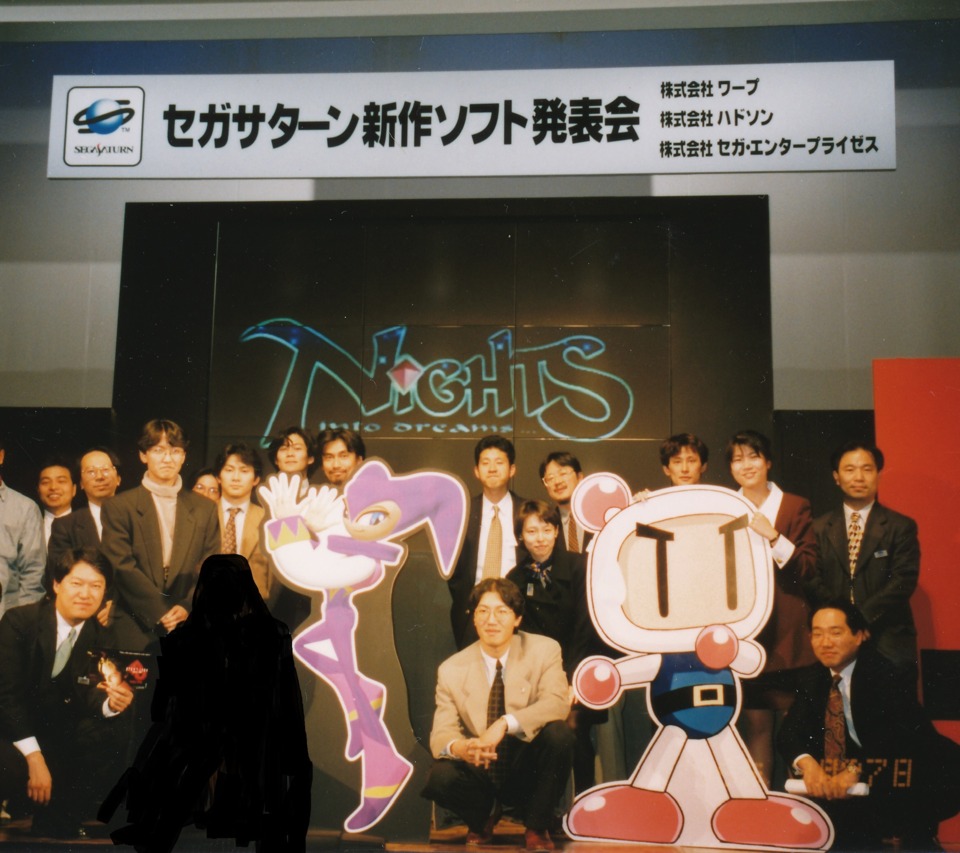
- Square Enix and Arzest allegedly removing Yuji Naka as director six months prior to release
- Relations between Balan Company and Arzest had supposedly deteriorated due to Arzest failing to address known bugs
- The two companies were supposedly also frustrated by Naka's disagreement with certain promotional materials for the game
- Square Enix allegedly barred Naka from engaging with fans on social media
Naka continued posting about the situation on Twitter following the conclusion of the lawsuit, reiterating many of his claims. Additionally, in a July post about the anniversary of NiGHTS Into Dreams..., Naka posted a picture of the NiGHTS development team with Naoto Oshima conspicuously blacked out.
Square Enix and Arzest offered no official comment on Naka's allegations, nor the lawsuit.
Reception
Upon its announcement, Balan Wonderworld drew quick attention for its flashy opening cutscene and involvement from Naka and Oshima. However, some did note that despite the pair's pedigree, many of their more recent projects had seen mixed results. In spite of this skepticism, the pair's reunion was seen as promising.
Immediately upon release of the game's demo in January 2021, this opinion shifted towards doubt and disappointment. Many players felt that the games controls were awkward, and that the game's visual style outside of cutscenes was unsual. This was an especially common complaint for the bending effect the environment was given, which some claimed made them nauseous as they played. In response to this reception, producer Noriyoshi Fujimoto posted a blog on the Square Enix website recapping the game's story and concept while stating that feedback would be taken into account, but many issues would be impossible to address before launch.
Upon release, Wonderworld's negative reception continued, with many complaints carrying over from the demo. Alongside them, the full game drew criticism for its clearly child-oriented design, questionable minigames, and vague, sometimes nonsensical story. However, some did appreciate the game's overall visual style, and some players claimed that the game's mechanics improved significantly if the player obtained most of the available costumes.

 PC
PC Xbox One
Xbox One PlayStation 4
PlayStation 4 Nintendo Switch
Nintendo Switch